You’ve no doubt heard the term “Manifest Destiny”, as referring to the zeitgeist of our Nation as it expanded Westward, more specifically as Americans lined up wagon train after wagon train to emigrate to Oregon and California in the 1840s thru 50s. The term itself was used to suggest a religious-overtone, as if Americans were moved by an Invisible Hand, a “come hither finger” luring them westward to fill in those blanks between the known United States and the Pacific as a part of their destiny.
The mountain man, Jim Bridger, or several other of his kind, who actually blazed all those trails West, would have simply said, “Twarn’t so.”
Postmodern thinking, which has slowly overtaken the cultural roost in History, philosophy and art in the West since the 1980s, going into overdrive since the rise of digital world (another type of “manifest destiny” in its own right) has taken it upon itself to redefine our historical Manifest Destiny by changing its source, from bottom-up to top-down, which is no more original than how all history had been designed and written for the 5000 years previous to 1776. This renders “post-modern” an oxymoron, about as original as the divine right of kings, which had been around since the pharaohs. But for another time, but it has a lot to do with how we read history today, as I’ll explain here, beginning with this concept described by so many contemporary actors in so many different ways.
America was explored and settled at least two times, and arguably three, and what separated them was their purposes in coming (or going) to this place in the first place. Until the 1960s at least, possibly into the 1980s where many public schools were still overseen by their community of parents, children were taught that those original settlers were seeking religious freedom.
(As you know, postmodern thinking takes a very dim view of finding any virtue in religious teaching so I’m unsure how this is taught in 4th Grade today, as my grandchildren are home-schooled. But we do know that a scarily-high percentage of American youth are no longer taught that America was born on the back of religious freedom, or even that murder, which was once punished as “wrong” (a sin) is now only a “statutory crime” against the good order of society (the State) according to Title 18, US Criminal Code, and that punishment can be avoided if one can manage to not get caught, or, be bargained away if one has a parent with connections. Postmodernism takes no notice of Natural Law, which forever remains silent while keeping its own tally of human folly, and does not always forewarn us that we have slipped from survival-enhancing behavior to survival-endangering behavior. Nature stands mute as we pave our road to hell with good intentions.
(So there you have it. With Natural Law all human societies and governments are on their knees in the back alley of Time, in an eternal crap game. Only most don’t know it. America had come so far, so fast, largely because America did know the rules of the game. Now, I’m less sure.)
See the maps.
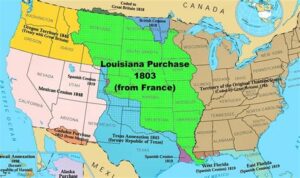
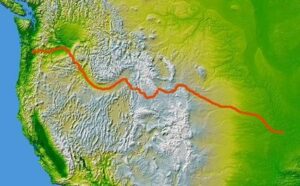
Back to Manifest Destiny…no contemporary settlement of the 1600s called their presence in the original colonies “manifest destiny” as they were largely uninterested in the purposes or welfare of other settlements up and down the coast. They didn’t start out as being “all in it together”. But the second wave, beginning around 1700, spreading out through western Virginia, then, running out of valley, turning left into the Carolinas, and over 70 years, providing the meat and potatoes that would be the militias that would finish the British in 1780-82….they did share a common purpose.
They were religious too, but it was land they sought, not religious freedom.
So there was something manifestly different in how this period of settlement of the United States took place compared to its first. True, both were unique, compared to the way both the lands north and south, Canada and Mexico, were settled, developed and managed, France and England to the north and Spain to the South.
What was historically unique about all of America’s migrations was that they were from the bottom up, while both Canada and Mexico were created from the top down, and managed like giant corporations, from Paris, Madrid and London. They didn’t send settlers, they sent employees.
So that “something” driving those people West after the Revolution wasn’t God or even gold (which came later). It was a kind of lebensraum, or living space, which was something that Americans had come to be able to enjoy from their earliest days in Virginia and Massachusetts….since there was always an “over-yonder” they move to if things got too crowed in Kentucky, as Daniel Boone did in 1821. We were always pushing our frontiers, in fact, until we bumped into the Pacific Ocean. And a professor at the University of Wisconsin, Frederick Jackson Turner, presented his famous “Turner Thesis” at the Columbian Exhibition in Chicago in 1893, celebrating, as a scholar, the feat the American people had accomplished (with very little help from government…”Yes, we did build that, Mr Obama”) stating that this feat was what defined the American character and made it unique, thus defining “American Exceptionalism” in the process. (Since Jackson didn’t know we would invent the airplane, fly across the Atlantic solo, build millions of motor cars, and finally, in just under 80 years, finally, with the help of the government, land men on the Moon, he lamented that we’d reached the last frontier. But he was also able to live another 40 years to see many of those events occur, which signaled our “New Frontier” days were not yet over.)
And this American exceptionalism had served as a core principle in teaching American history into the 1980s, only now debunked based by postmodern history, (above) via Wikipedia, which teaches us how that history should be reanalyzed in what we now know. (See my Wikipedia note, below.)
It was an Irish newspaperman in Washington DC, name of O’Sullivan, who first coined the phrase “Manifest Destiny” in 1845. His magazine was a Democrat Party mouthpiece and his purpose was to couch the still young movement West as an expansion of slavery, which the Democratic Party was about how it best should occur. (Having been raised in a state which was politically owned and operated by two competing wings of the Democrat Party, with no Republican legislature nor governor the first 100 years after the Civil War, until 1968, I understood how this one-party system worked.)
(Note the maps.) So, pioneer America has always had two histories, our Colonial History with its War of Independence, securing all that beige area, ending in the 1820s, then with the westward movement filling in all that area west of the Mississippi River. Remarkably it only took about 60 years, two generations. As Turner indicated, even by 1890 our historians believed that, alongside the Civil War, America had been redefined by this westward expansion. In 1800, the US and its territories ended where Wisconsin, Illinois, Tennessee and Mississippi formed their western boundary, mainly the Mississippi River, and all that beige colored area to the right of it. That area encompasses the original 13 colonies, plus their expanded territories gained from England settling the Revolution, where the US got the Midwest, or what were called the Northwest Territories. (I discussed this in “The Idea of Private Ownership of Property” in April, 2021.)
Now, the 13 colonies had their own westward expansion, which was when settlers, despite the English ban on settling territory across the Appalachians, In Indian territory, continued to trail into Pennsylvania and Ohio River Valley. Also “Long Hunters” regularly hunted in what is now Kentucky, and Daniel Boone, of North Carolina was knighted the first trail-blazing mountain man when he opened a wagon trail through Cumberland Gap, where Virginia, Tennessee and Kentucky intersect, eventually going on to build a fort at Boonesborough, on the Kentucky River. (I was part of a Boy Scout group that first laid the hiking trail through Cumberland Gap in 1960.)
The early great American historians, e.g., Francis Parkman, looked upon Daniel Boone as the “great Pathfinder”. Even in Kentucky, tired of civilization, and looking for better living space, Boone would cross into Missouri and die there in 1821. But before he died, he went up the Missouri River and hunted, at age 76, with his sons, and met several fur trappers. Col Boone was a household name to most. At the same time James Fenimore Cooper had immortalized “Hawkeye”, or Natty Bumppo, in five novels, 1826-1841, from The Pathfinder and Last of the Mohicans to The Prairie where his star character too would escape to Missouri to get away from civilization.
Francis Parkman, as a (sickly) young man of 22 first went up the Missouri in 1846, and wrote a book about his travels, The Oregon Trail. One section of a book by Harvard historian Bernard DeVoto, in 1942, 1846, The Year of Decision, was dedicated to Parkman’s encounters with all the various species of humanity he’d never imagined in his area of brahmin Boston, peasant middle-class farmers from Indiana, rough-talking mountain men, and tall, noble Sioux who he seemed to think more highly of than the Americans. DeVoto intentionally wrote his book entirely from the point of view of several participants, emigrants and mountain men-trail blazers, from their letters and journals, including a young lieutenant named US Grant in his first military action along the Mexican border at Matamoros; allowing the actors themselves to define their intentions.
The book is therefore a standing historical tour de force of the westward movement.
( I have composed a short article, cited here about how to use Wikipedia accurately for it is largely bundles of postmodernist “interpretations”, meant to politically redefine areas such as history. I provide keys on how to know you may be getting biased, postmodern political interpretations of history, having confirmed my thesis in its biographies of Daniel Boone and Fenimore Cooper, and Frederick Jackson Turner’s “Frontier Thesis” and Manifest Destiny, discussed here. There are easy ways to still use Wiki without having your spine curled, but like learning to make your way through a forest, you must use a compass, but must first know how to find True North. “Trust, but verify.”)
So, Manifest Destiny meant many things to many types of people and Bernard DeVoto tried to cite as many experiences as he could.
Interestingly the New England part of the original 13 colonies were none too happy about this westward move from the beginning, even as the majority of those Americans who packed up their 18th Century antique dressers in the back of their wagon, only to drop them off somewhere along the North Platte River in Nebraska after their two remaining oxen could no longer pull such a heavy load, had begun their journey from New England. (Just look at that map of the trail to Oregon and you can tell where the land just got too rough to continue carrying such luxuries as a 150-yr old oak Welsh dresser.)
While most of the families were very religious, unlike the unaccompanied men who began pouring into California after gold was found there in 1849, it was not religion that guided these people West. In fact, Presbyterians and Methodists often didn’t travel very well together at all. And it was democracy to the point of anarchy, costing the early wagon trains days and weeks because every change required a vote and every vote required a day or two of speechifying. Add to that the “botanizing” of New England women who luxuriated through the springs blooms across the prairie, while they had been urged to make the best of the good days at the start because of the need to get across the mountains before the snows. (When they reached Ft Hall, on the Snake River in modern Idaho, they were often a month behind schedule, which spelled catastrophe for some of the parties.)
Nor was Manifest Destiny political, although eastern and southern media might have liked it to be. The Missouri Compromise of 1820, which declared that every free state that was admitted to the Union had to be accompanied by a slave state, made slavery the guiding political issue of the era. The Democratic Party was formed in 1824 to profit from that, one founder, Martin Van Buren, an abolitionist, and Andrew Jackson, a slave holder, but both being what we would know today as “big government” Democrats. Profiting from a tit-for-tat, free state for every slave state admitted was what the Democrats were all about.
And Texas was settled by pioneers who largely agreed with slavery, but only the eastern quadrant could grow cotton where it paid off. Texas gained its independence from Mexico in 1836 after the Alamo and Gen Sam Houston captured Gen Santa Anna disguised as a woman trying to avoid capture. Then Texas immediately appealed to America to allow it to join the union, only in hung in limbo for 10 years because they hadn’t found a suitable free state to match it up with. By 1845 Mexico and Santa Anna wanted Texas back, so Congress quickly admitted Texas to the Union then sent Gen Zachary Taylor to the new border to try and draw Santa Ana into crossing into Texas. (There were some in Congress who wanted all of Mexico, and by 1848 they could have had it, only then thought better of it. Instead America only kept that part of the map in pink (above), Arizona, New Mexico, Nevada. California came along on their own, from the Bear Flag Revolt, also in 1846 and also covered in DeVoto’s book.
But before any of these events could happen and that map could be filled it, it would have to be explored and mapped, which is why Thomas Jefferson sent the Louis and Clark Expedition out to explore in 1803-1806. They went all the way to the Columbia River, which separates Oregon from Washington, and they filled in much of that map of the major tributaries.
And Bernard DeVoto did have one prejudice, and that was the men who explored and broke trails to fill in those maps….and which is why, when I first read Across the Wide Missouri in 1971, he became on of my favorite historians, which was especially remarkable, being a Harvard professor. He would win a Pulitzer Prize for Across the Wide Missouri, in 1947, which is still considered the best account of the mountain men and the Rocky Mountain Fur Trade in print, and then the National Book Award in 1953 for his The Course of Empire, which was a history of how ALL of North America was explored and mapped, from the Spanish and French explorers, ending with Lewis and Clark, who gave birth to the Mountain Men.
It all began with 1846, cited here.
DeVotohad a special regard for the mountain men who blazed those trails west, starting in the 1820s, traveling usually in teams of four-to-six, with mules and sometime Indian guides. And while Hollywood has tried to paint them as wise to Nature’s signs and hardships, but none too clever around readin’ and ‘riting, many were remarkable observers and chroniclers.
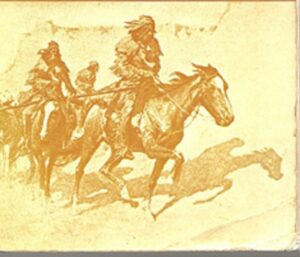
1846 was at the end of the mountain man era, his Across the Wide Missouri giving a better picture of their lives in their hey-day, but one of them, a fellow named Jim Clyman, who had served with “A.Lincoln” in the Black Hawk War, and was one of the early members of the Rocky Mountain Fur Company, having gone west with Gen Ashley in the 1820s, part of the original “Hundred Men”. After 6 years, he came back and settled in Illinois, fought against Black Hawk, ran a business, then pulled up stakes to go back to the mountains at age 52. Bernard DeVoto got to see his journals and noticed how many places he showed up in the 1846 narrative, in California and on the Oregon Trail.
As mentioned at Ft Hall, above, It was from Clyman’s journals that he would meet up with several wagons that had left Independence, Missouri months earlier, but who had decided to take the “Hastings cut-off” to California, on the advice of a huckster named Lansford Hastings, and his book The Emigrant’s Guide to Oregon and California, only Hastings had never actually traveled that cut-off. But while it looked good on paper, Clyman, who had traveled it on horse, knew it would delay a wagon team at least a month. Headed east, not west, he met up with this group of wagons at the spot where the trail to Oregon and California split just past Ft Hall. They were already delayed by a month, but one group, the Donner Party, ended up being snowed in the Sierra Nevadas, where many died of starvation, and some of the emigrants resorting to eating their animals and the deceased members of the group. Clyman never knew their fate. But those who did survive that winter also left journals and DeVoto noted the down-the-nose attitude many of these easterners had for the unbathed mountain men, and they shrugged off Clyman’s advice, going on to meet their fate.
Unlike any Harvard man I’ve ever known, DeVoto held the mountain men in higher regard than any of the ungrateful emigrants who used the trails they’d blazed and the maps they’d drawn that made their journeys survivable.
In DeVoto’s mind the emigrants didn’t deserve the mountain men, which is also a sentiment that runs through our minds, especially these days, when we pause to reflect about the young men on D-Day on the beach, and every veteran on Memorial day, and then be reminded that their stories are not welcome in most university history departments, and certainly not Wikipedia.
Manifest Destiny is all about class and sentiments and impulses our modern betters cannot begin to understand. They are lost, only don’t know they are lost, all because they don’t know and are no longer taught about the shoulders they all stand on.

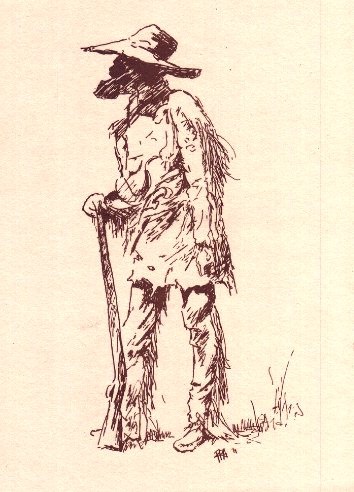

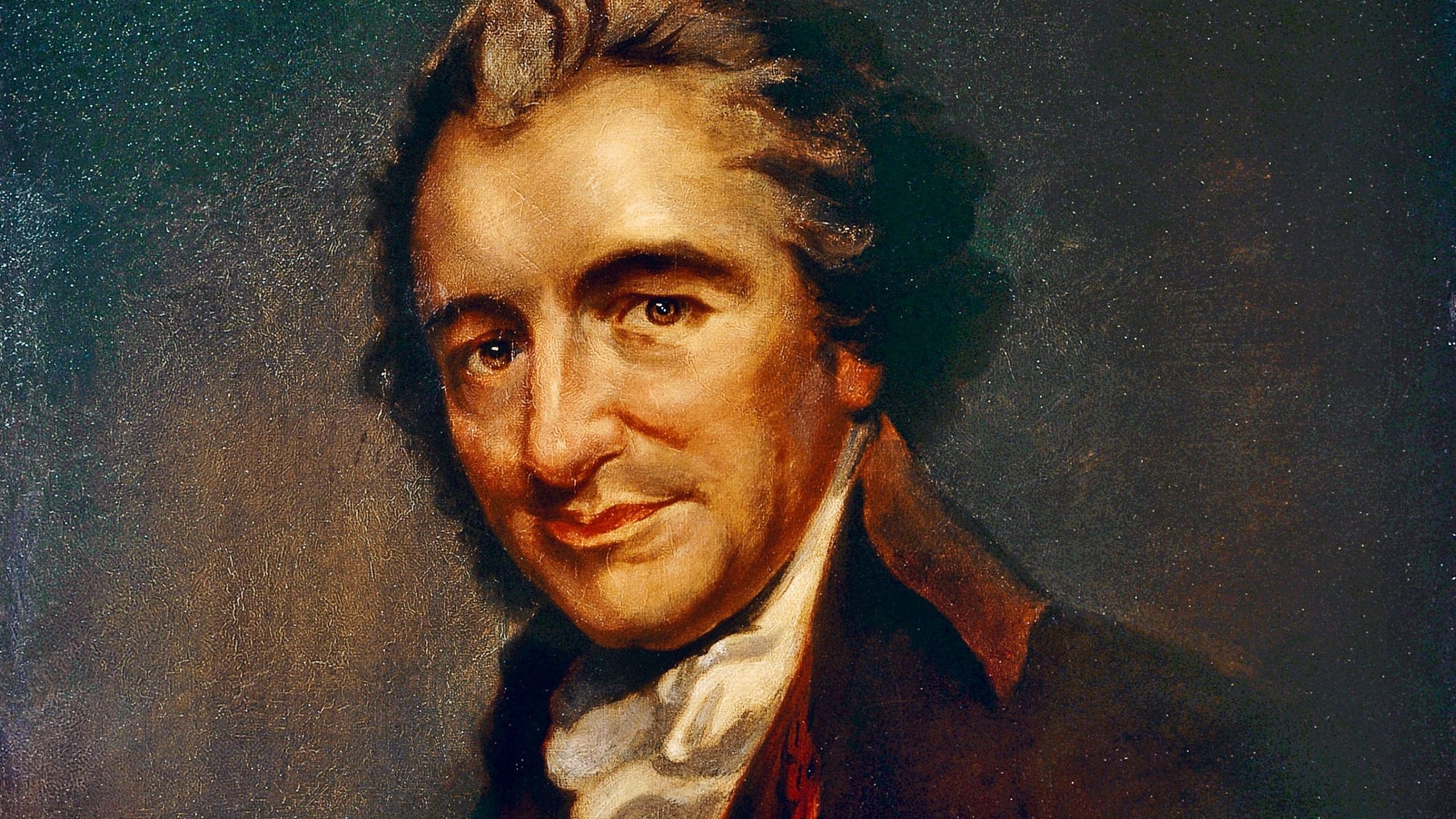
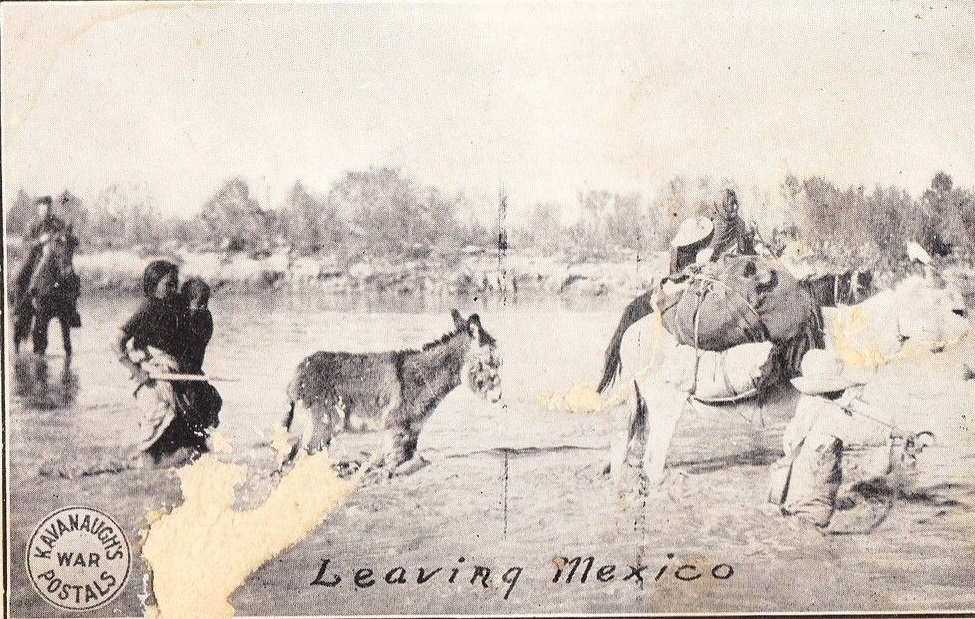
Great article. Saved for later reference to follow all the links and books. Thanks!